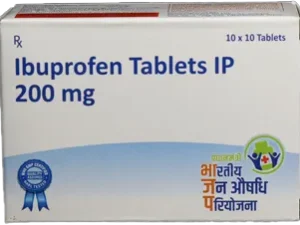Description
◉Aceclofenac 100 mg and Acetaminophen 325 mg are two medications that are sometimes used in combination to treat pain and inflammation.
◉ Aceclofenac is a nonsteroidal anti-inflammatory drug (NSAID) that works by reducing inflammation and pain in the body. It is often used to treat conditions such as osteoarthritis, rheumatoid arthritis, ankylosing spondylitis, and other types of joint pain.
◉ Acetaminophen is a pain reliever and fever reducer that works by blocking certain chemicals in the body that cause pain and fever. It is often used to treat mild to moderate pain, including headaches, menstrual cramps, toothaches, and muscle aches.
◉ When taken together, Aceclofenac and Acetaminophen can provide more comprehensive pain relief than either medication alone. However, as both medications can have side effects, it is important to follow the dosing instructions provided by your doctor or pharmacist and to report any adverse effects promptly. Additionally, it is essential to avoid taking more than the recommended dose or using these medications for an extended period without medical supervision, as this can increase the risk of adverse events.
Composition of Drug
◉This drug contain Aceclofenac 100 mg + acetaminophen 325 mg .
How does the Drug work
◉Aceclofenac and acetaminophen are two different types of pain relievers with different mechanisms of action.
◉ Aceclofenac is a non-steroidal anti-inflammatory drug (NSAID) that works by inhibiting the production of prostaglandins, which are substances in the body that cause pain and inflammation. By reducing the levels of prostaglandins, aceclofenac can reduce pain and inflammation in the body.
◉ Acetaminophen, also known as paracetamol, is a pain reliever and fever reducer that works by blocking the production of prostaglandins in the brain. It is not an NSAID and does not have anti-inflammatory properties.
◉ When taken together, aceclofenac and acetaminophen can provide complementary pain relief for a wide range of conditions, including headaches, dental pain, menstrual cramps, and arthritis. By combining the two medications, patients may experience greater pain relief than they would from either medication alone, while also minimizing the risk of side effects associated with higher doses of either medication alone. However, it is important to follow dosing instructions and consult with a healthcare provider before taking any medication combination.





